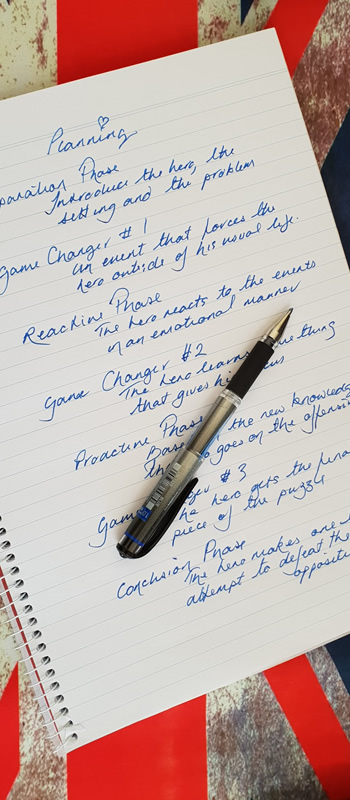We all like to listen to or read a good story, but many of us would also like to write one. However, this isn’t always as easy as it sounds. It can be tough to think of an idea, and even when you have one you may not know how to put it together. If you are thinking about writing your own story, follow these steps to get started. And remember, practice makes perfect, so keep on writing no matter what!
 Create a Character
Create a Character
Chances are that your story is going to revolve around a central protagonist. Before you begin writing your story, you should create your character. Think about his or her personality traits, what he or she looks like, and what strengths and weaknesses he or she may have. Once you have a solid character, you can proceed with putting him or her into your story.
Find a Conflict
Without some sort of trouble for your character to overcome, you probably won’t have much of a story. You’ll want to come up with some sort of conflict facing your protagonist. Maybe he’s lost in the wilderness and needs to find a way out. Or maybe there’s a bad guy who keeps causing problems for him, and he needs to figure out how to deal with it. Either way, you’ll want to come up with the main problem for an interesting story.
Develop the Surroundings
The setting is very important for writing a good story. Is your character an astronaut venturing through the universe to fight intergalactic aliens? Maybe she’s a princess in a fictional enchanted forest world who is trying to find her prince. Determine where your story takes place and what the important places and things are that surround your character. This includes other characters as well. You’ll need friends, family members, and enemies in order to create a well-rounded story. Describing your setting in detail will help keep readers engaged and will paint a better picture of the world in which your story takes place.
Come up With a Solution
Eventually, your character will have to find a solution for his conflict. This is totally up to you, but your story will not be complete without one. The solution shouldn’t just come out of nowhere, however. You should have this on your mind throughout the entire time that you are writing your story. This way, you can create events that will lead up to your character’s victory, making the tale more believable and helping it to flow more smoothly.
Don’t Forget a Conclusion
Once the conflict has been resolved, you will still need to provide a solid, satisfying conclusion. The story doesn’t end immediately after your protagonist reigns victorious. Readers will want to know what happens to the other characters and to the surrounding world in which the story takes place. They may even be interested in learning about your character’s potential next adventure, keeping open the possibility of a potential follow-up story.